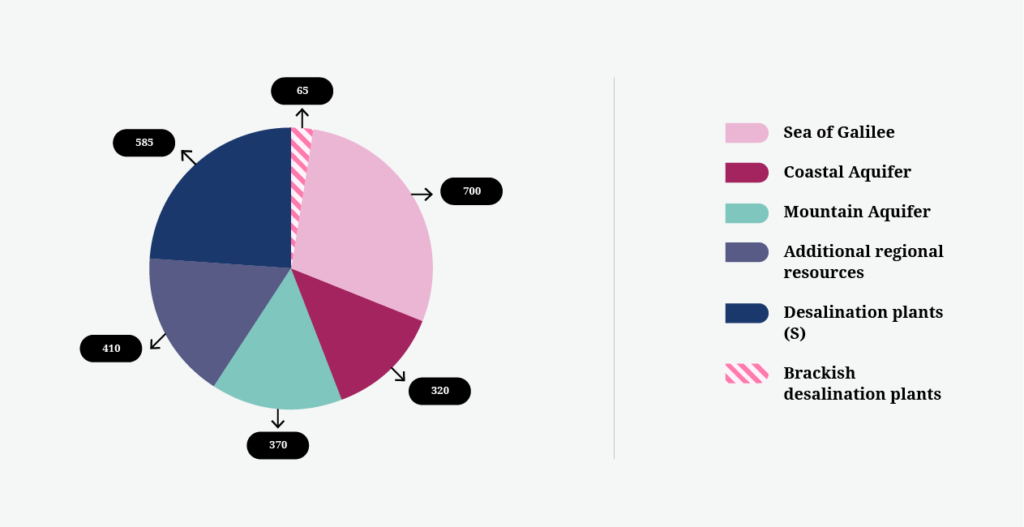The Israeli Green Paradox: A Global Cleantech Hub Catching up with Climate Change

Share this Post
Edition date : October 2021
With nearly 650 companies and startups in clean technologies or Greentech (solutions that reduce negative environmental impacts), Israel has over the years gained the status of a high-quality international player in the fields of environmental protection including water management, agriculture, energy and waste. The country, which ranked sixth in the 2017 Global Cleantech Innovation Index, exports novel technologies all over the world. This is particularly impressive given that the country does not contribute much to pollution at a global scale, with only 0.18% of the world’s total greenhouse gas (GHG) emissions.
However, when we look at the contribution of the average Israeli per year, Israel stands in the midrange, with 7,53 tCO2 per capita in 2019, almost as much as Europe and China, though lower than the average American (20 tCO2 e per capita). Despite an abundance of sun and advanced technologies, Israel’s energy-mix is mostly based on fossil fuels. When walking across the country, fuel-powered vehicles are at a standstill in long traffic jams, plastic is everywhere, and excessive air-conditioning is running at low-energy efficiency. While Israel has some of the best cutting-edge technologies to tackle environmental challenges, it still faces domestic environmental challenges.
Of the environmental challenges, climate change is probably one of the century’s biggest threats to overcome. “Observed increases in greenhouse gas (GHG) concentrations are unequivocally caused by human activities, warming the climate at a rate that is unprecedented in at least the last 2000 years,” wrote the IPCC in its last report. As a result, droughts and natural disasters are more likely, and these can be a catalyst for mass migration and violent conflicts. For example, the civil war in Syria has been identified as partly caused[1] by severe drought followed by food shortages that triggered the entire conflict. Indeed, the Middle East, which is already politically unstable, is expected to be one of the first regions in the world to run dry and Israel will not be exempted from the detrimental consequences.
In this context, policy makers, investors and entrepreneurs should seize upon the environmental threats as an opportunity for transforming society and the economy. Energy transition – shifting from a fossil-fuel-based system towards renewable energies – is seen as a driver to reduce GHG[2] in the atmosphere and mitigate global warming.
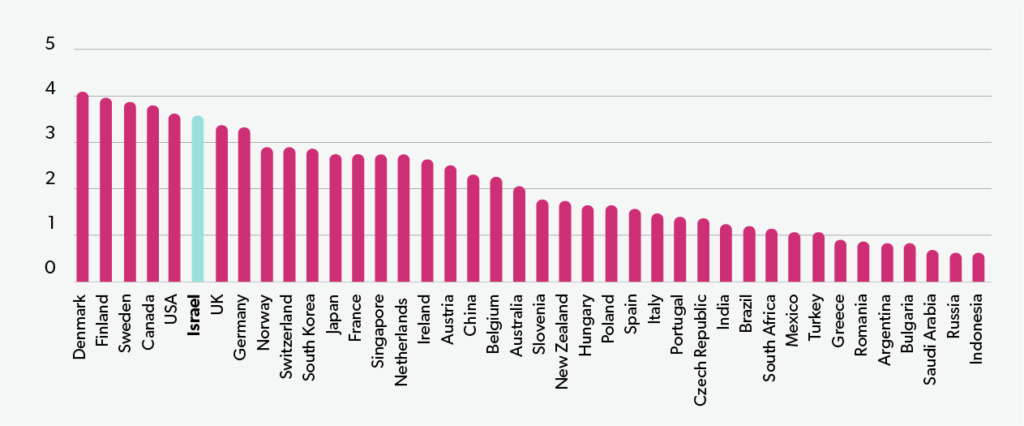
Figure 1: Cleantech Countries Innovation Index 2017 – Source: Cleantech Group – 2017 Global Innovation Index
The following text provides an introduction to the role, challenges and opportunities of Israel in the face of global environmental challenges: First, it gives an overview of the country’s historical background: from water and energy security concerns to hi-tech, through the more recent re-orientation toward a lower carbon trajectory. In the second part, the Israeli cleantech ecosystem is mapped, including the main players and presents a few trends in sectors such as energy, transportation, water, and waste. This section also highlights the role of Israel in the global cleantech ecosystem, in which countries may cooperate or compete. The third part of this paper explores Israel’s ongoing environmental challenges within its national context.
From 1950s Water and Energy Security Concerns to Modern Clean Technologies
Water Security
Israel’s natural potable water resources include the Mountain Aquifer, the Coastal Aquifer, and the Sea of Galilee. After 1958, Israel accelerated water extraction, leading to overutilization and the decline of groundwater quality and water level of the Sea of Galilee. Back then, about 70% of the extracted water was used for agriculture, and intensive efforts were invested in irrigation research. Early concerns about the scarcity of water, combined with the drought crisis of 1999-2002, generated intense efforts to find alternative ways to cope, and have led to the utilization of new sources: Cloud seeding, recycling of sewage water (effluent water) and desalination of seawater (brackish water and desalinated water). At the same time, water consumption has drastically decreased over the years, dropping from 504 million Cubic Meters (MCM) /year per capita in 1967 to 98 MCM/year per capita in 2015.
Today, five seawater desalination plants (along the Mediterranean coast) and 30 additional smaller facilities for desalinating brackish water from groundwater wells (in the Arava and Negev region) account for approximately 80% of Israel’s drinking water, while 85% of treated wastewater is being re-used. In comparison, less than 1% of treated wastewater was being reused in France in 2020. Israeli pioneer Netafim, which developed drip irrigation in the 1960s, has become an internationally leading company in micro-irrigation, enabling farmers to reduce water use by up to 90%, according to an interview. Within a few decades, Israel became a world leader in wastewater treatment and water management. The country is now able to produce 93% of its own food requirements, supplemented by imports of grain, oil seeds, meat, coffee, cocoa and sugar.[3]
Depending on the time of the year and the weather conditions (rainfall, drought, heat wave), water management to supply water demand is a complex equation to solve. Extracted water from the aquifers and the Sea of Galilee is cheap, but must be controlled to ensure a minimum replenishable water level. Desalinated water is energy-intensive but unlimited. Surface water can reach a high evaporation rate. Therefore, water supply by source varies every year.
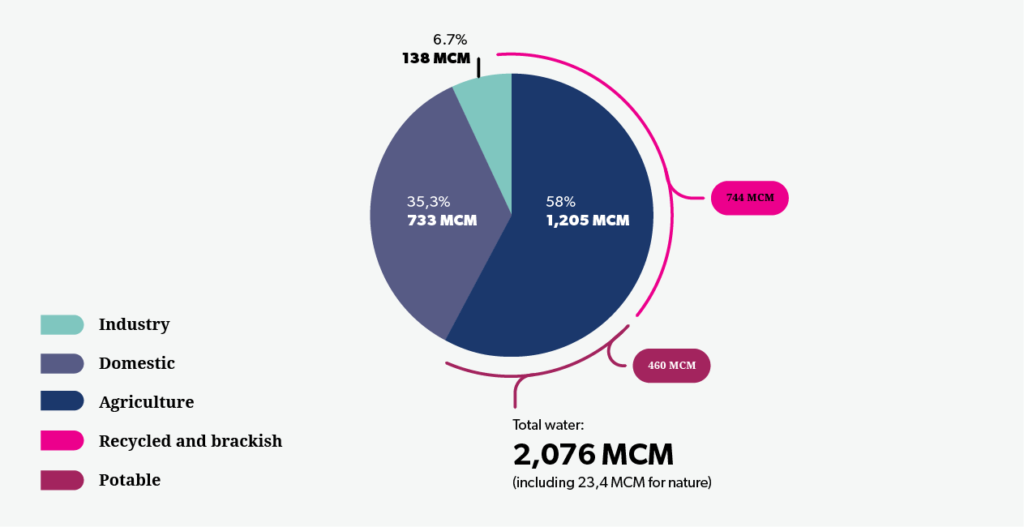
Figure 2: Water Use in Israel per Sector for 2013 – Source: Fanack based on Israeli Water Authority
Energy Security
When it comes to energy resources, dependence on imported fossil fuels such as coal and oil has rendered Israel vulnerable since its founding. Even though the possibility of constructing at least one nuclear power plant has been discussed on and off for 25 years, Israel only operates nuclear research reactors. While coal has long been Israel’s primary source of electricity, its use is declining as natural gas discoveries in the 2000s off Israel’s coastline may help shift the country’s energy security. Indeed, the discovery of offshore gas reserves in the maritime territories of Cyprus, Egypt and Israel could change the energy mix and political regional landscape in the Middle East. For example, Jordan concluded an agreement to buy Israeli gas from Leviathan, which could lead to the transformation of the port of Aqaba into a second regional energy hub and enable Jordan to re-export Israeli and Egyptian gas to Arab and Asian markets.
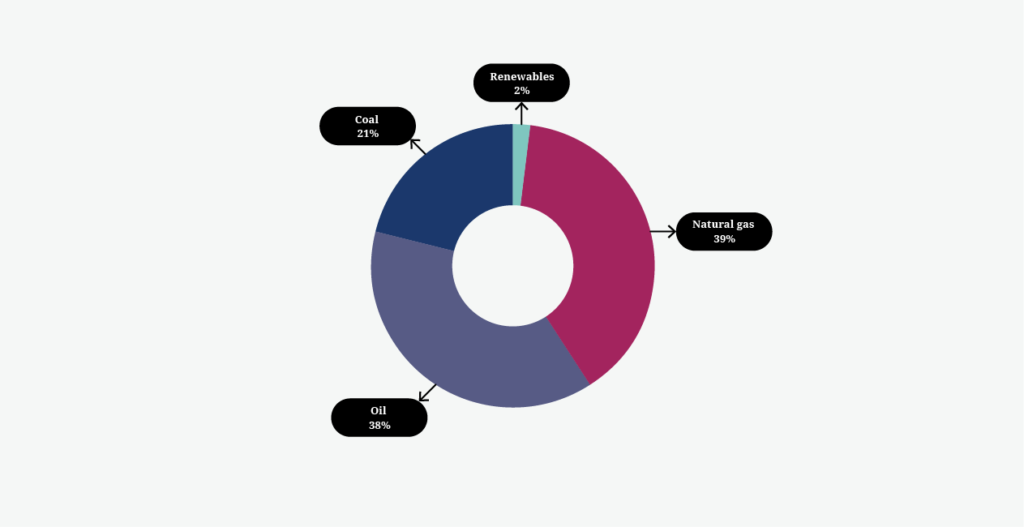
Figure 4: Primary Energy Supply in Israel in 2020, excluding net electricity import / Based on IEA data from IEA (2020) [Israel: Total energy supply (TES) by source, Israel 1990-2020], IEA (2020), https://www.iea.org/countries/israel, All rights reserved; as modified by the Israel Public Policy Institute.
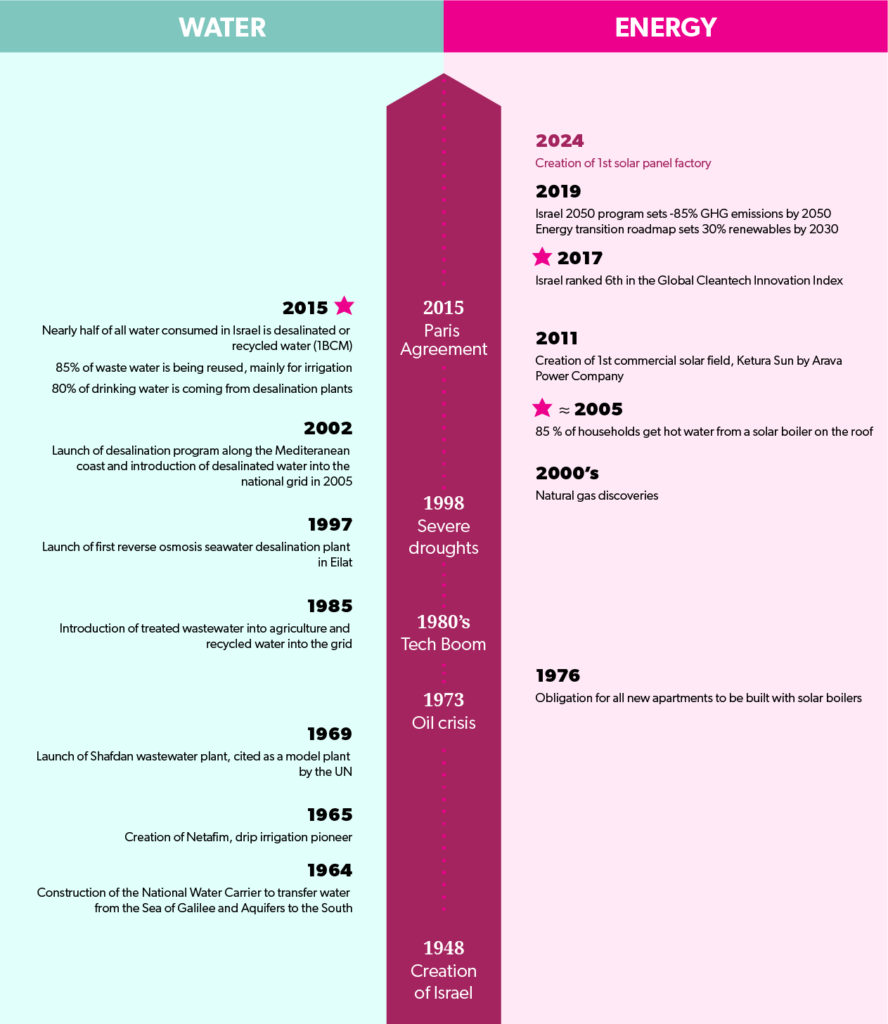
Figure 5: Timeline of Energy and Cleantech Development in Israel
The Rise of Hi-tech and Clean-tech
In the 1980s, rapid development of computer science and technology in the US ushered the current hi-tech era. Coupled with a highly qualified labor force, Israel’s investments in the defense and aerospace industries created cutting-edge technologies that became the basis for Israel’s unique hi-tech industries. Military technology was transferred to civilian use, thanks to the unique relation between the Israel Defense Forces, research universities and industries. This is how the country shifted from an economy based on agriculture and secondary sectors to an economy based on innovation and hi-tech.
Innovative Cleantech Solutions: a Mature, Fragile and Appealing Ecosystem
The Israeli Cleantech Ecosystem: Main Players and Major Trends
The Israeli Cleantech Ecosystem emerged from a dynamic national innovation ecosystem, with active Israeli academics, mature support organizations, numerous VC Funds and governmental support. The following Israeli cleantech map intends to offer a representative – but not exhaustive – selection of private corporations and startups, public organizations, incubators & accelerators, VC Funds, and facilitators.
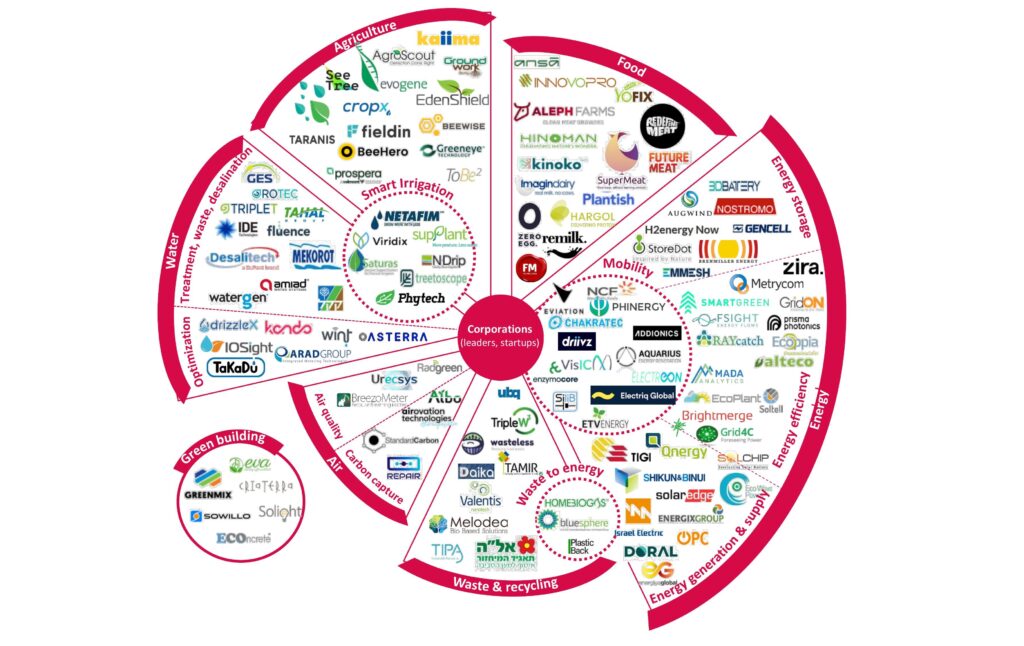
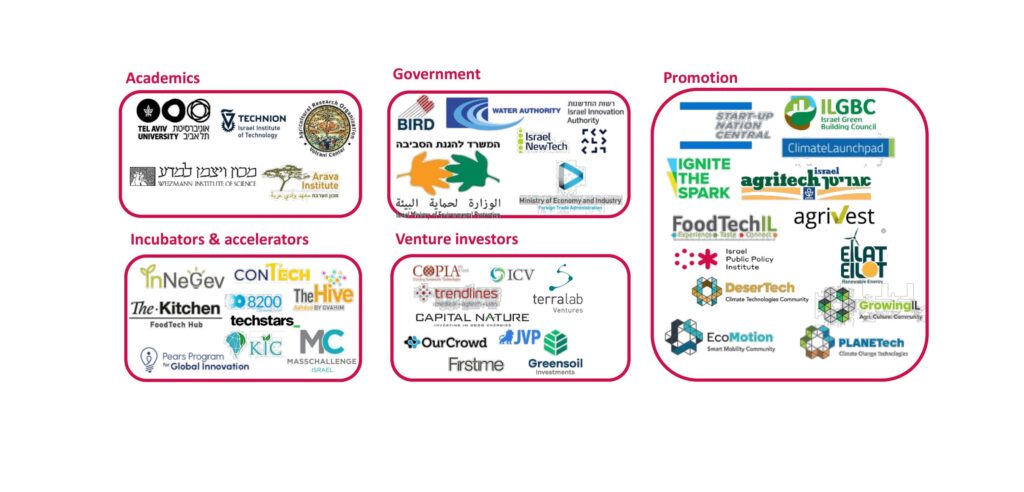
Figure 6: Israeli Sustainability Ecosystem
Although it is clearly difficult to predict which technologies will drive future cleantech markets and which of them the Israeli government will decide to support actively, it is possible to outline some major trends in the following industries:
Water: The water industry is the oldest cleantech industry in Israel, with technologies such as drip irrigation in agriculture and wastewater treatment. Launched in 2017, the startup Fluence developed advanced Membrane Aerated Biofilm Reactor technology for wastewater treatment and already has partnerships in the Gulf. Predictive maintenance and leakage alerts technologies are also on the rise, aimed to preserve water and optimize use. Other solutions include Watergen, which developed an atmospheric water generator that can produce 5,000 to 6,000 liters a day, depending on humidity.
Agriculture: The Israeli agritech ecosystem is one of the most famous, not only for its capacity to develop cutting-edge technologies, but also for the kibbutzim,[6] which were at the basis of agtech innovation. Smart farming, also known as precision agriculture, allows farmers to reduce inputs (pesticides, fertilizers, water) while increasing crop productivity. For example, SeeTree, founded by Israeli intelligence officers and top AI experts, captures data from aerial imaging and ground collection tools to help orchard growers better manage inputs and detect early signs of crop diseases in the US and in Brazil.
Food: In the foodtech industry, the current model of meat production is responsible for more greenhouse gases than transportation (it requires massive amounts of land, food, energy, and water) [7]. The rise of vegetarianism is in part made possible by R&D product improvements, such as plant-based proteins. A second type of alternative is known as cultured meat (or clean meat) and is expected to be available within a few years. Aleph Farms has already raised $118 million to grow real steaks from isolated cow cells in the lab. In a similar manner, Remilk uses a microbial fermentation process to reproduce milk proteins to craft real dairy with the same flavor, texture, and nutritional values as traditional milk.
Energy: Energy is probably the largest cleantech sector flourishing. From solar farms and wind turbines to hydrogen generators and wave power plants, there are many ways to generate cleaner energy, and major tech improvements have made them more competitive and accessible. In this area, transportation and mobility are responsible for about a third of global energy-related carbon emissions, according to Startup Nation Central. In this context, hydrogen and electric vehicles are part of a key trend that still needs to overcome some obstacles. In September 2021, researchers from the Technion University discovered an efficient method for producing hydrogen that uses copper ions and borate as a catalyst.
Waste and recycling: In this realm, new packaging and films technologies based on corn oil, starch or plants would reduce plastic consumption. The startup Tipa is developing new compostable materials that would decompose naturally into soil nutrients within 180 days of disposal inside a compost system. Another trend relates to food and green waste, which represents 44% of global waste production. Organic waste can be converted into clean electricity, thanks to sophisticated transformation processes, like the waste-conversion technology developed by UBQ Materials.
While VC Funds in Israel are very active, with a total of $10.5 billion raised in five months in 2021 (especially in cybersecurity, software enterprises and fintech sectors), investments in cleantech industries are less significant. Cleantech investments were about $3 billion between 2018 and 2020. Indeed, cleantech investments require larger capital investment than other sectors (such as software companies, cyber companies or fintech), especially for hardware-based technologies, and have a longer return period. This particularity also explains why only a few Israeli VCs specialize in cleantech.
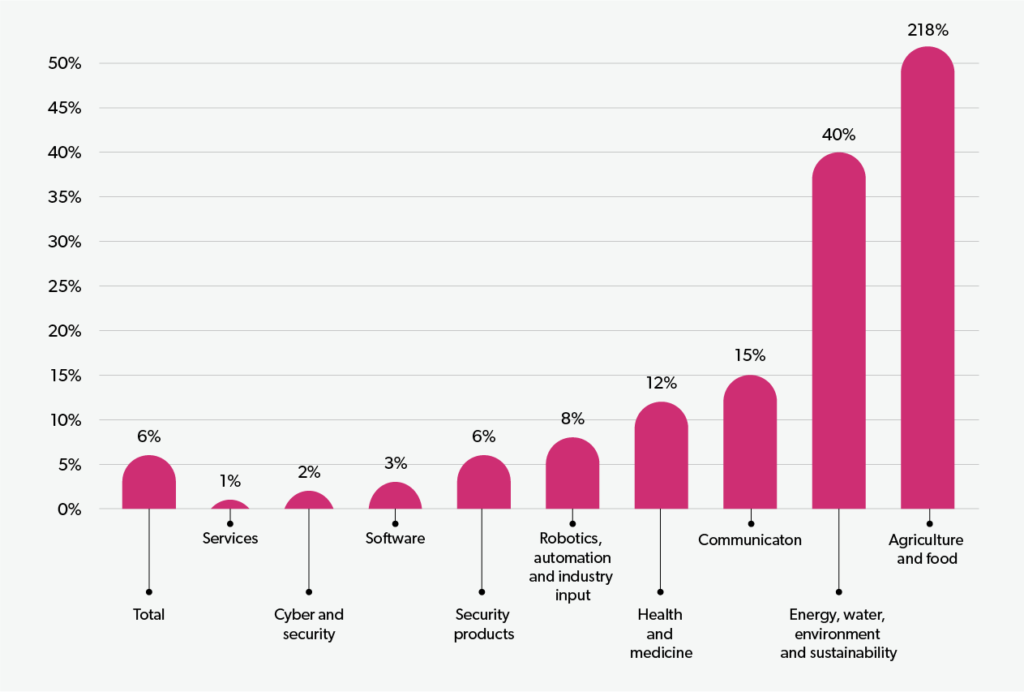
Figure 7: Investments in Israeli Technology Companies in 2020 (USD millions) – Source: IVC and Israel Innovation Authority data processed by the Israel Innovation authority (2021 Innovation Report)
According to a report published by IVC, in 2017, foreign investments accounted for 60% of Israeli hightech capital raised, with the remaining 40% coming from Israeli investors. In 2021, US WaterFund partnered with the Israel-based VC firm OurCrowd for investment in water and agriculture technologies, focused on the Middle East.
In addition to private capital, support from governmental organizations and international funding programs have helped in the founding of many companies, especially in early stages when private investors are not willing to take the risk. One of the major governmental organizations involved in Israel’s entrepreneurial and innovation ecosystem is the Israel Innovation Authority, which provides financial and developmental resources for entrepreneurs and companies doing industrial R&D within Israel. This includes R&D funding, calls for proposal (such as the International CleanTech Pilot Program, which ended in April 2021), academic knowledge transfer program, incubators, etc.
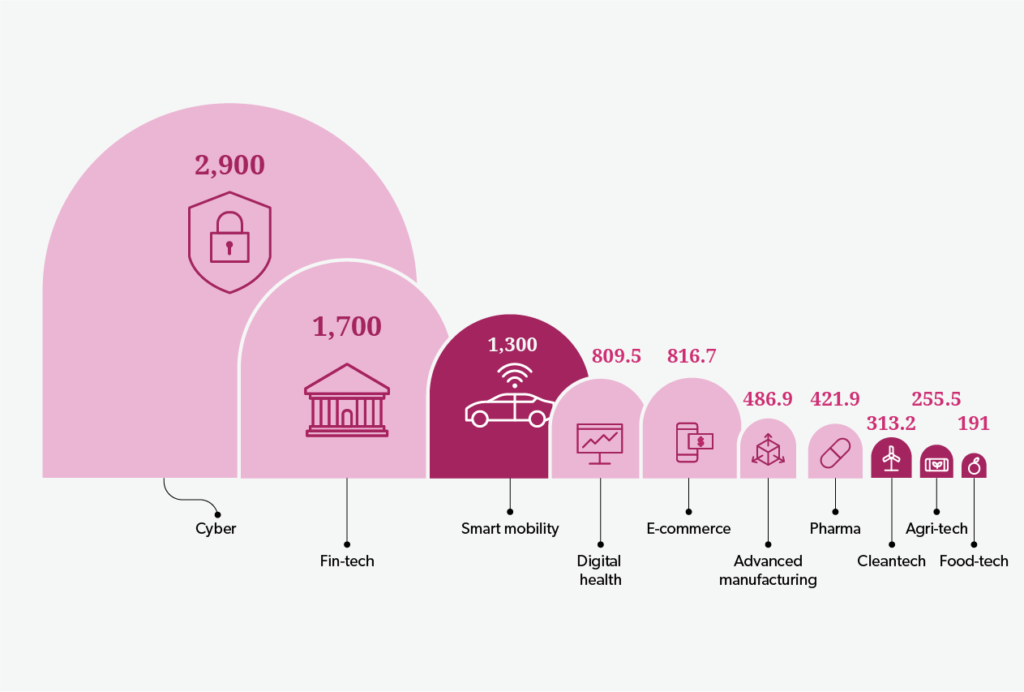
Figure 8: The Share of Israel Innovation Authority Grants Relative to Overall Capital Raised (2018) – Source: IVC and Israel Innovation Authority (2021 Innovation Report)
Israel also partnered with other countries to establish joint innovation projects and binational agreements, such as BIRD (US-Israeli) and its subsidiary BIRD Energy that promotes clean energy innovation and binational cooperation. From 2009 to 2020, BIRD Energy funded 55 projects with a total government investment of approximately $42 million, according to the US Department of Energy.
Israeli Cleantech Startups Need Governmental Support to Overcome the Market Entry Barriers
Despite the rise of sustainability concerns all over the world, cleantech startups face more challenges compared to other sectors of the hi-tech industry. First, private investors tend to prefer short-term return and lower initial investment, which places R&D in hardware development at a disadvantage. Cleantech startups that succeed despite this first obstacle, then have a struggle scaling up. Indeed, the market’s potential customers, including utility companies, energy players, farmers and municipalities, are quite conservative and are slow to adopt new technologies. Finally, due to the complexity of the hardware requirements, unexpected technical problems sometimes unfold when shifting from a prototype to an actual pilot implementation, and later on to its industrialization.
However, policy strategies and instruments leveraging the commercialization and scaling of green technologies in the local ecosystem can help cleantech startups reach the market. In a report published by IPPI in 2020, some forms of governmental action have been identified:
- Implement innovation support and regulatory instruments leveraging the transition: This includes several concrete examples such as carbon tax on fossil fuels, tax reduction for private corporations that invest a specific percentage of their revenue in sustainable innovation, and encouraging companies to set emission reduction targets;
- Support the initiation of a cleantech growth fund and strengthen funding support for early stage cleantech: The government needs to clearly prioritize which long-term development technologies they want to promote;
- Foster collaborations between large-corporations (such as utility companies) and early-stage startups for market entrance: Facilitation of access to large-scale testing sites, where startups can test their technologies or even work with the corporates to improve the applicability of the technologies, can be beneficial to both sides;
- Show strong climate leadership to set Israel on course towards climate neutrality, thereby creating the buzz needed for Israeli cleantech to achieve this ambitious goal.
(The global race for) Cleantech: A Matter of Competition?
A 2021 risk assessment published by Eurasia, a political risk consultancy group, makes the case that climate will emerge as the new playground of global power rivalries, with the US and China taking central stage. On the one hand, China has launched a massive domestic decarbonization program while investing massively to dominate global supply chains for a range of clean technologies such as batteries, electric vehicles, solar panels and power control systems. On the other hand, the US rejoined the Paris Agreement in 2021 and scrambles to catch up to China in what could quickly become a global “clean energy arms race”. China’s investment in clean technology is the biggest in the world, reaching $83.4 billion dollars in 2019, followed by the United States with $55.5 billion dollars.
In this context, China looks to Israel to acquire state-of-the-art technologies (solar energy, desalination, aluminum-air battery, fast-charging technologies): a $300 million trade agreement was signed in 2017 in order to import Israeli energy and agricultural technologies to China. At the same time, the expansion of China’s economic involvement in Israel over the past decade raises concerns in the US, Israel’s closest ally. This might lead Israel to develop a more careful strategy for managing relations with China.
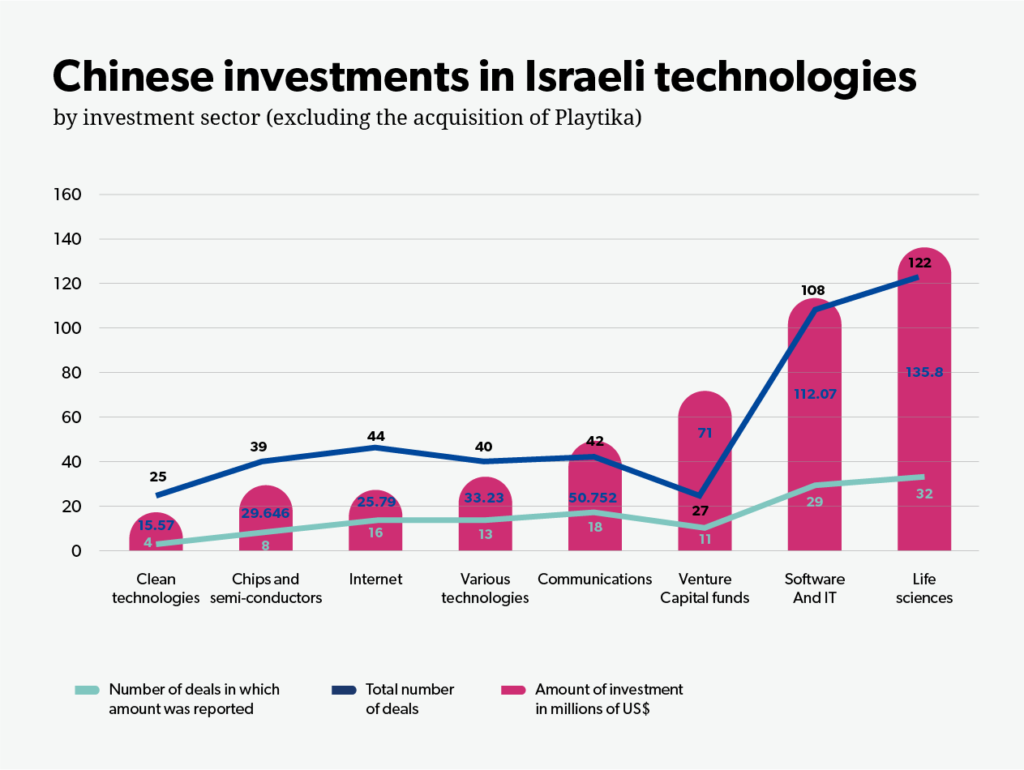
Figure 9: Chinese investments in Israeli technologies (excluding the acquisition of Playtika) – Source: Chinese Investments in Israel, Doron Ella, special publication 2021, The Institute for National Security and Studies (INSS)
The Long Road ahead to Becoming a Role Model
In recent years, global concern about climate change prompted countries worldwide to lay out a plan of action to reduce GHG emissions. The Paris Agreement of 2015 aimed to cap global warming well below 2°C by the end of the century. Although Israel is internationally recognized as a major player exporting advanced clean technologies on a global scale, the country still has to overcome some persistent environmental challenges back home if it wishes to become a role model for a country that is successful not only in developing innovative technologies, but also in deploying them as part of an overall vision of becoming climate-neutral and sustainable.
Desalinated Water: A Clean and Sustainable Solution?
There are about 20,000 desalination plants around the world, the largest of which are located in Saudi Arabia, the United Arab Emirates, Kuwait, Israel and Dubai. Desalination has been practiced for ages and is not an Israeli invention. There are two methods of removing salt and other minerals from water: thermal distillation (boiling seawater to produce purified water vapor), and membrane filtration (pushing the seawater through sieves to separate water from salt). Desalination plants require large amounts of energy and discharge brine (water with extremely high concentrations of salt and chemicals added during the process) into oceans, causing damaging effects to marine life. In other words, desalination usually comes with an extensive carbon footprint and environmental costs.
In Israel, desalination plants are based on the use of membrane filtration, and more specifically reverse osmosis, which has lower energy costs than thermal distillation. Moreover, due to additional technological improvements, Israel exemplifies a model for how cost-effective desalinated water production can be. However, there is room for improvement in terms of environmental protection as reverse osmosis is still associated with a high carbon footprint. Furthermore, even though the pollution level of the Mediterranean waters along Israel’s coast is regularly controlled, and the brine is now discharged further out at sea than was originally required, concerns about the effects on marine life remain.
Israel’s desalination strategy can be seen as a climate-change adaptation measure, however, by making it more environmentally friendly, it could furthermore be embedded as part of the country’s decarbonization efforts and thus enable the country to capitalize on its potential to become a global role-model for environmental innovation leadership. The government should consider deploying solar desalination plants, just like the Israeli startup Tethys Solar Desalination (TSD) started to develop in 2014. Moreover, efforts must be made to improve brine treatment or find new applications for it as an alternative to disposal. In some situations, for example, brine can be used for chemical production, aquaculture, as well as public infrastructure maintenance and renewable energy generation and storage.
Israel’s Decarbonization Plan to Reduce GHG Emissions
Following the Paris Agreement in 2015, the Israel 2050 program was launched in March 2019, with targets for an 85% reduction in GHG emissions by 2050 from 2015 levels, with an interim target of -27% by 2030.
To achieve these goals, major efforts are expected to be made in the transportation, energy, construction and waste sectors. For example, transportation plans call for a gradual transfer to electric cars and natural gas trucks with a ban on imports of gasoline cars starting in 2030. In 2020, the Energy Ministry announced in a roadmap plan that by 2030, 30% of the total energy production will be from renewable sources. The plan also aims for the cessation of all coal plants by 2026, which could easily be achieved by shifting the coal production toward natural gas production.
It is important to note that although gas emits around 50% less CO2 than coal, it is still a fossil fuel that generates greenhouse gas emissions. The dependence on natural gas can be very tempting, since it is cheaper than renewable energies. Thus, major efforts will be needed to ensure that the shift from coal to natural gas does not slow down the deployment of renewable energies in the country. To this end, a carbon tax is expected to be introduced gradually from 2023 on all fossil fuels, as unveiled by the government in August 2021. Other actions could include scaling up solar PV energy investment, increasing public transportation, and promoting vehicle retrofitting (classic cars being converted to electric vehicles).
A New Waste Strategy
When it comes to waste, Israel is consistently among the low achievers, with about 80% of its waste going to one of 12 landfills around the country. Problems associated with landfilling include high levels of GHG by the rotting rubbish in the ground, and land and water sources degradation. Furthermore, the country produces nearly 30% more waste per capita annually than the OECD average, according to data from 2016[8].
In Israel, the Extended Producer Responsibility system imposes “responsibility for a product’s entire life cycle upon the manufacturer and importer of that product”. This responsibility includes treating products such as beverage containers, tires, packaging waste, electric/electronic equipment and batteries, plastic bags, after the consumer no longer wants it”. The Ela Corporation collects part of the country’s plastic beverage and glass bottles, from the huge collection cages placed across the country, and transports them to a facility for sorting and crushing. Since the only plastic waste recycling factory (Aviv Plant) closed in 2018, the plastic cubes are sold to European factories that turn them into other plastic products. It is noteworthy in this context that much of Europe’s plastic waste is exported to China. In other words, recycling is an expensive and energy-intensive process that currently involves transporting massive amounts of goods around the globe.
In 2021, the Ministry of Environmental Protection published a new national waste strategy, planning to move from 80% landfilling today to 20% landfilling in 2030, and to recycle 54% of municipal waste generated by 2030. The plan’s top priority: waste reduction. The plan mandates the establishment of three waste-to-energy facilities to produce electricity through the incineration of trash instead of coal or gas.[9] The recycling of organic waste, which constitutes about a third of total waste, would be promoted by the installment of brown bins to collect food and green waste, as well as the creation of treatment facilities to produce biogas from this waste. Overall, intensive efforts must be made to educate the public to reduce their consumption of disposables and separate recyclable plastics, metal and cartons from glass or paper into the designated containers.
Conclusion
Israel is rightfully recognized globally as a leader and a role model when it comes to clean technologies in areas such as water management and agriculture as the country’s contribution to fighting climate change and environmental challenges on a global scale is considerable. Nevertheless, in order to fully exhaust its potential as a global environmental innovation leader, governmental support is still needed to help green Israeli startups succeed in accessing the global market. Furthermore, Israeli governments should step up not only the export of green technologies abroad, but also work to promote climate and environmental protection efforts back home. This should be done, for example, by pressing forward with decarbonizing Israel’s energy, transportation and construction sectors, as well as greening its waste management. In these areas, plenty of work remains.
A final remark on sustainability, innovation and consumption: while there is no denial of the central role that technology and innovation play in addressing the challenges of climate change and environmental degradation, it is important to stress that the reduction of the negative human-impact on the environment unequivocally starts by reducing consumption, from water to disposables, and from meat to electricity. It would be counter-productive to leave all lights and air conditioning systems on with the thought that using solar-powered electricity was compensating for the waste. Moreover the “solutions” themselves – recycling processes, desalinating water, electrifying vehicles, solar plants and all the other top innovative solutions – all require resources to be produced, shipped or consumed. In that realm, Israel ought to invest not only in the development of cutting-edge technologies, but also in educating its population, and in implementing suitable laws, regulations and infrastructure that serve to reduce consumption and promote a more sustainable mode of living.
Further Readings
Water
“Background – Seawater Desalination in Israel,” State of Israel – Ministry of Finance, last update 2020, link (webpage)
“Israel Leads World in Water Recycling,” Fluence News Team, 2020, link (article)
Water Management in Israel, World Bank Group, 2017, link (report)
Country Profile – Israel, Food and Agriculture Organization of the United Nations (FAO), 2008, link (report)
Israel: A Global Leader in Water Management and Technology, State of Israel – Ministry of Foreign Affairs, link (report)
Alon Tal, Addressing Desalination’s Carbon Footprint: The Israeli Experience, MDPI – Department of Public Policy – Tel Aviv University, 2018, link (report)
Energy
“Israel in Brief,” The Embassy of Israel to the United States, link (webpage)
“Fossil Fuel Support Data and Country Note,” OECD, June 2020, link (webpage)
Nour Mardini, “The Road to Energy Security in Jordan and Israel,” Yale Environment Review, 2020, link (article) Yale Environment Review
“Background – Renewable Energy in Israel,” State of Israel – Ministry of Finance, last update 2021, link (webpage)
Innovation and Cleantech Startups
“EnergyTech Map,” Startup Nation Central and Ignite The Spark, 2020, link (infographics)
“Israel Agritech Market Map,” Agfunder News based on Startup Nation Central and Greensoil Investments, 2017, link (infographics)
“Israel’s Mobility Landscape,” Viola Group, 2018, link (infographics)
Shoshanna Solomon, “From 1950s Rationing to Modern High-Tech Boom: Israel’s Economic Success Story,” The Times of Israel, 2018, link (article)
Junli Hao, A Study of Cleantech Innovations in the Israeli Entrepreneurial Ecosystem, MIT REAP, 2018, link (report)
Diana Süsser, Accelerating Cleantech Commercialization in Israel. Green Innovation as Catalyst for Sustainable Development. Policy Paper Series “Decarbonization Strategies in Germany and Israel,” 7/2020, link (report)
Israel’s State of Climate Tech 2021, Israel Innovation Authority and Planetech, 2021, link (report)
China and Israel
Dale Aluf, “Israel’s Looming Conundrum: A US-China Cleantech Arms Race,” The Times of Israel, 2021, link (article)
Doron Ella, “Chinese Investments in Israel: Developments and a Look to the Future,” The Institute for National Security Studies, 2021, link (article)
Dominic Chiu, “The East Is Green: China’s Global Leadership in Renewable Energy,” Center of Strategic and International Studies, link (article)
Israel Decarbonization Trajectory
“Update of Israel’s Nationally Determined Contribution under the Paris Agreement,” NDC to the UNFCC, July 2021 (download report directly on Google)
Dmytro Spilka, “Catering to Cleantech: How Israel is Evolving into a Sustainability Pioneer,” The Times of Israel – Blog, July 2021, link (article)
Waste
“Waste Facts and Figures,” State of Israel – Ministry of Environmental Protection, link (webpage)
A New Perspective on Plastic Waste in Israel: A Circular economy, Arava Institute for Environmental Studies, link (report)
Melanie Lidman, “Looking to Dump Poor Recycling Record, Israel Asks Public to Start Pitching In,” The Times of Israel, 2019, link (article)
“Ministry Unveils New Waste Strategy,” State of Israel – Ministry of Environmental Protection, 2021, link (webpage)
[1] Other factors include complex social phenomena and government mismanagement.
[2] Greenhouse gas originates mostly from the energy sector, such as coal-fired power stations, gas and oil consumption in industry, buildings and transportation.
[3] “Israel in Brief,” The Embassy of Israel to the United States [this does not appear to be sufficient info for finding original]
[4] Replenishable natural water resources, and production capacity for desalinated water.
[5] Largest solar power plants include Ashalim plot A with thermal energy storage (121 MW) and Ashalim plot B with a big solar power tower (121 MW) in the Negev, and Zeélim solar park (120 MW) completed in 2019
[6] Cooperative communities whose Agriculture was traditionally based on shared land, resources and labor to tackle tough farming challenges
[7] according to the United States Environmental Protection Agency
[8] Arava Institute, based on OECD data
[9] The waste-to-energy plant is not a perfect solution : various factors such as toxic gas emissions and wastage of energy required in the combustion process, non-reutilization of organic waste, make this waste-to-energy solution controversial. Above all, these projects threaten recycling.
The opinions expressed in this text are solely that of the author/s and do not necessarily reflect the views of the Israel Public Policy Institute (IPPI) and/or its partners.
Share this Post

What are Filter Bubbles and Digital Echo Chambers?
Many experts are concerned that the curation of content on social media platforms limit our chances of encountering…
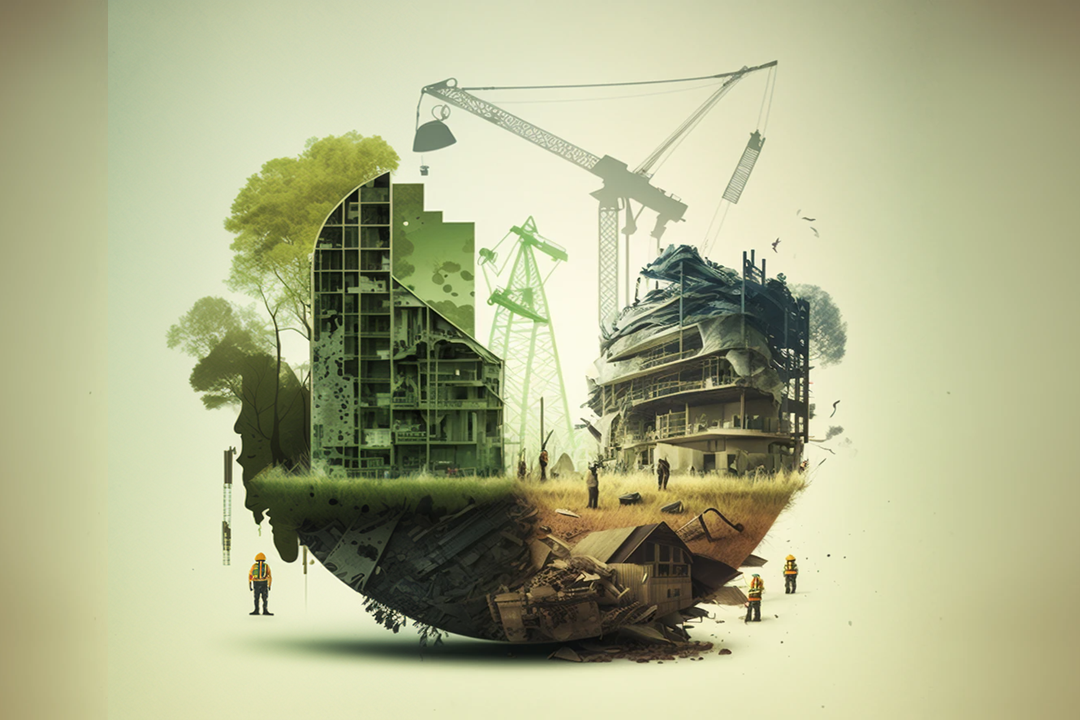
Promoting Circular Economy in the Construction Sector – A view from the Netherlands
The construction industry is one of the oldest and largest industries in the world, and it relies on…

What is climate-smart agriculture?
Climate change, food security, and agricultural practices are intricately interconnected. The diverse array of stakeholders, including farmers, policymakers,…

